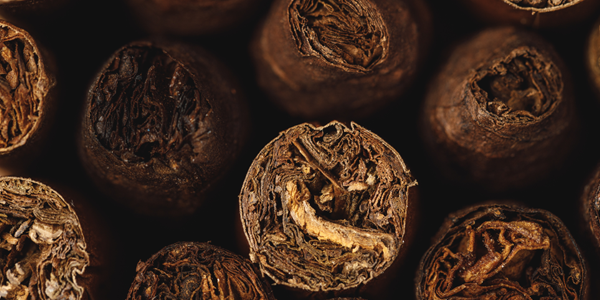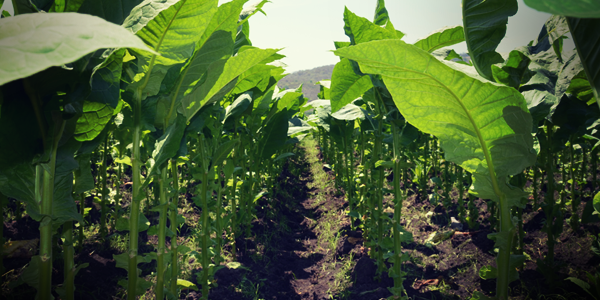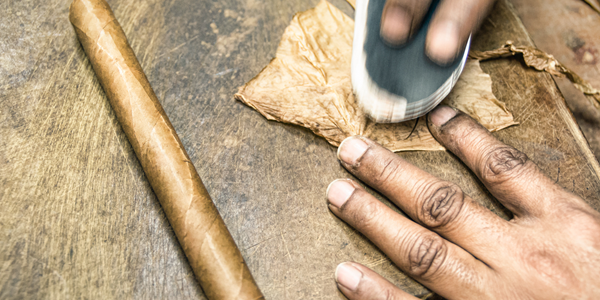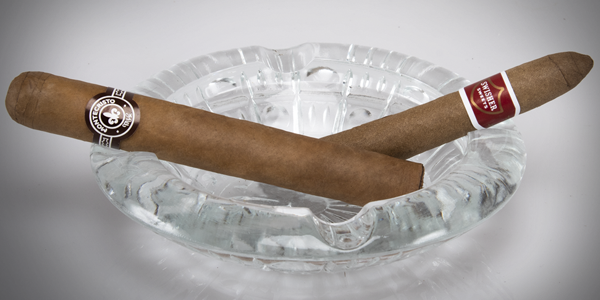What to Do if You Find Stems in Your Cigar
Spoiler alert. The answer to the question “What Should You Do if You Find Stems in Your Cigar?” is: smoke it.
A cigar is a plant-based product. Vegan, even, until you pair it with a great rib eye. The tobacco plant’s leaves are the only physical component of a premium, handmade cigar. Those leaves and the ways in which they are manipulated, plus time, make for a great smoking experience in the hands of a good cigar-maker. That cigar-maker and his team have to pay attention to thousands of details. One of the key early steps in creating a great cigar is preparing the tobacco leaves by removing that big stem that runs down the middle.
What Is a Tobacco Stem?
The stems in a tobacco leaf are part of the vascular system of the tobacco plant. This is the equivalent of the circulatory system in human beings. Running up the middle of each tobacco leaf is a stem called the midrib. The midrib is the thickest stem in the leaf. Coming off the midrib are smaller veins. All deliver nutrients to the tobacco leaf.
Stems in Your Cigar
Wrapper
In tobacco leaves that are to be used for wrapper, the midrib is removed in the cigar-making process. This is called “stemming” and results in the original tobacco leaf being separated into two halves, each of which makes a wrapper for a cigar.
There are definitely going to be veins in the wrapper leaves. The wrapper is always, or should always, be put on the cigar with the veiny side up so that the thicker part of the veins is not visible. If the wrapper leaf has been properly handled and aged, veins should not present a problem with the flavor or construction of the cigar. If the veins are prominent, this could mean a defect in the wrapper leaf. Some types of wrapper, like Cameroon and Broadleaf, have thicker veins which can contribute “toothiness” to the cigar wrapper, making it less smooth. Tooth in a cigar is generally attributed to tiny bumps on the wrapper. The bumps are actually fine pockets of oils.
A very thick vein, which is unusual in a well-made cigar, could affect the burn of the cigar.
Filler
In filler tobacco, stems in your cigar can mean a lot of flavor. Now, the intention is not necessarily to leave a lot of stem in the long filler of your fine smoke, but if bits of the stem remain attached to the long filler leaves, that’s not likely to cause much of a problem with the burn of your cigar and can provide extra flavor. The stems can also provide structure to the cigar. Usually about a third of the stem is removed from filler leaves. I have not personally experienced a stem ruining a cigar, but it’s possible to encounter larger stems in certain cigars, particularly heavier blends rolled with more Ligero or Viso tobaccos. Stronger leaves naturally exhibit heartier stems. In cigars predominantly rolled with Seco tobaccos, the stems are smaller and less noticeable – but, the flavor is less robust. If you like stronger cigars, don’t be alarmed if you discover an occasional stem. As long it doesn’t interfere with your cigar’s draw, you’re good. In the case of short-filler cigars, the stems are usually chopped up with the other tobacco.






